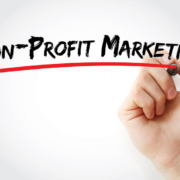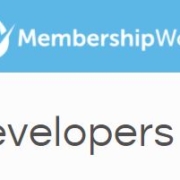Advice for Nonprofits
Getting Along While Getting Stuff Done
I have some advice for nonprofits. I have been creating websites and assisting with marketing for nonprofits for most of my career. I have worked with large national organizations and small community groups. Some are official 501(c)(3) organizations, some aren’t. I have found no matter the size, they all have one thing in common.
Nonprofits have to work together, despite different backgrounds, personality types, education, geography and skills.
Sounds like a typical workplace environment, doesn’t it? We need to get along with our co-workers and customers/clients at work and elsewhere. And when we volunteer, we have to get along with the people we are teamed up with.
Getting along with others isn’t always easy
Occasionally, one of my nonprofit clients struggles with this. Some people have very strong personalities and can be overbearing. Trying to steer every decision to their way of thinking. Volunteers can get frustrated. Arguments start, bitter emails are sent, it gets out of hand. Sometimes good volunteers leave the organization to preserve their own mental health. Afterall, when you are volunteering, who needs the extra anxiety or toxic interactions? I don’t like conflict or confrontations. I try to stay calm in these situations and work through it. I always encourage open communication and honesty. Respect and taking personal responsibility.
My job is to make my clients happy
That’s my primary goal, happiness. Yes, I want to give my clients a nice, functional website or membership system they can manage moving forward. I want the experience with me to collaborative. I want my clients to know that no question is a bad one. I’m here to answer your phone calls and emails.
Everyone learns in different ways. That’s why I provide support with written documentation, videos, zoom sessions, phone calls and in-person training. I want every client to fully understand what I created for them and how it will help their organization today and into the future. So, how can I provide happiness? By proving the following tips for nonprofits.
What’s my advice?
Here we go, it’s pretty simple, really.
1. DEFINE WHO’S RESPONSIBLE NOW and MOVING FORWARD.
Before we start working together, I want to fully understand the dynamics of the people on the team. I ask questions to determine who will be managing the website after it’s launched. For my clients who use MembershipWorks, I want to be clear who will be keeping it updated in the future, following up with members who don’t renew or helping them complete their online profile for the Membership Directory.
Many times volunteers do this work. And that’s great. Many are eager to learn what needs to be done. Sometimes I continue to be the website administrator because clubs don’t have someone with WordPress skills to take on the website management. I have several clients who ask for MembershipWorks help just once a year for an annual event.
It’s important for everyone to know what roles they will play and what the expectations are for the future. It’s best to work with a small group or one liaison when creating a new website or installing MembershipWorks. When the teams get larger than 8-10 it’s much more difficult to come to a consensus, make decisions, and set up zoom meetings that have to fit into so many schedules.
Once everyone is clear on the role they will play during the project and after, then we proceed.
2. LISTEN.
My second piece of advice is to listen. Even if someone is younger, older or less experienced, they still provide value in regards to the experience you want for your members. Great ideas come from brainstorming when everyone feels they can contribute without being judged or shot down immediately. Everyone involved has value. Sometimes you get more ideas than we can implement! That’s when I start a list for “phase 2” improvements to consider after the initial project is complete. We don’t want good ideas to be lost just because the timing isn’t right at the moment.
3. BE A LEADER.
Some of my best experiences working with nonprofits are when they have a leader who really leads. Someone who empowers others and encourages participation and input. A leader checks in with the progress, knows what’s going on, and who might need some extra support to fulfill their responsibilities. Leaders are observant but don’t micro-manage the project. They keep the overall goals and timeline in mind. I love it when the leader uses tools to create an environment where the team can stay focused and get the project done on time. Happy leaders create happy teams.
 Know Your Strengths
Know Your Strengths
I’ve worked with all sorts of personality types and skill levels. In fact, I often have the StrengthsFinders strengths assessment in my mind when I start working with a new group. I like to understand how people are wired and what makes them good at what they do. You can learn more about my top five strengths by reading a post I wrote on the subject. Here’s a clue, my top strength is Activator. I love getting stuff done!
In the end, it’s about happiness. I want my clients to be happy.
Please let me know if you have any questions about how your nonprofit should proceed when starting a new project with me. I’m happily available and ready to help! 🙂
Michelle Aspelin
Mindshare Marketing & Implementation Services, LLC
Learn more about me and read the recommendations from my happy clients on LinkedIn.









